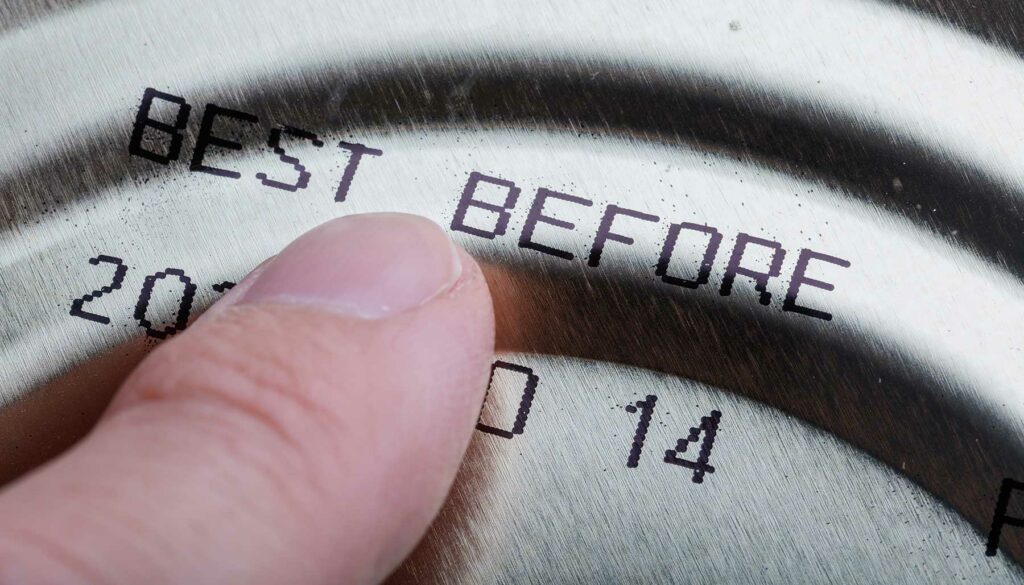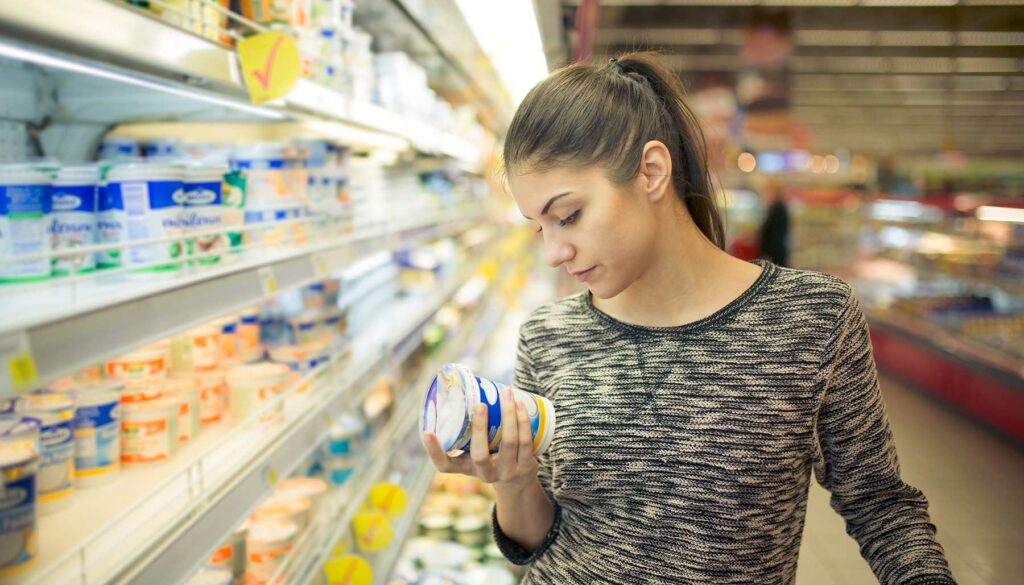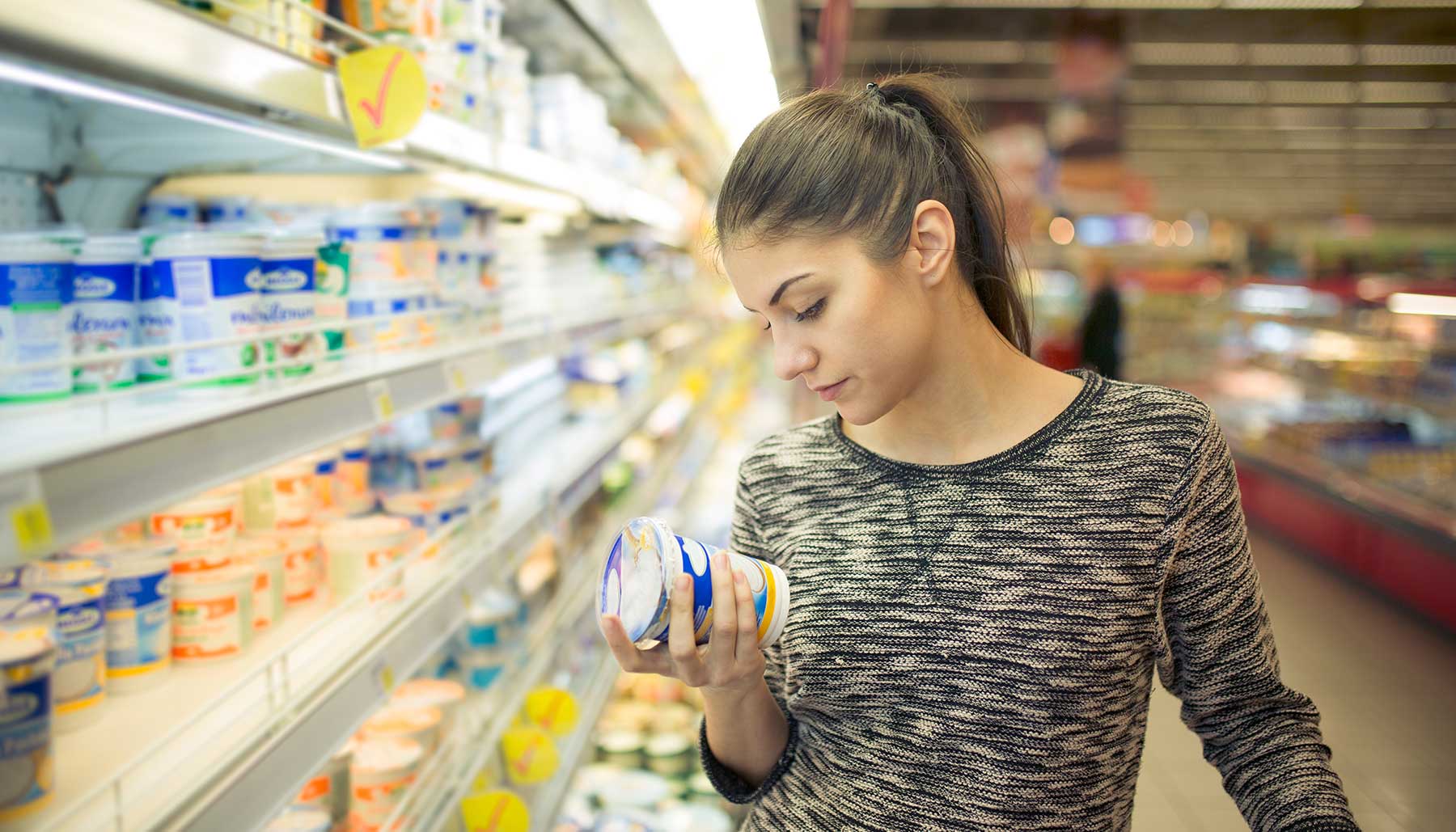How many times a week do you throw away food items because they are past their “Use By” or “Best By” dates?
I’ve started ignoring those dates, and it might be time that you did, too.
Ignoring Food Product Dating
By now, you’ve probably grown pretty accustomed to foods having dates printed on them. Some suggest when to use a product, while others claim the food expires past the date. Once a product gets past that date, you toss it, right?

Related: Savvy Uses for Foods That Are About to Go Bad
Well, as it turns out, you probably don’t need to throw it away.
No, I’m not over here eating spoiled food, and I certainly wouldn’t tell anyone else to do that, either. But what if I told you that those numbers don’t always hold as much weight as you might think? In fact, all those packaged foods on store shelves aren’t even required to have dates at all.
Those dates don’t actually indicate when a food has spoiled. Instead, it is actually related to the food’s best quality, including taste and texture. But the thing is, those dates are assigned somewhat arbitrarily by food manufacturers as part of a streamlined production process. The manufacturers aren’t being held to any regulatory standards concerning those dates, or what kind of expertise is required to even decide how long the dates should last.
We usually look to the U.S. Department of Agriculture (USDA) to keep food products safe and regulated. But no one, not even the USDA, has set any standards about those expiration dates. The only product the USDA cares about? Dating infant formula. They did not tell Frito-Lay how long Doritos have until you can’t eat ‘em.
Here is what the USDA’s Food Safety and Inspection Service has to say about food dating:
“Manufacturers provide dating to help consumers and retailers decide when food is of best quality. Except for infant formula, dates are not an indicator of the product’s safety and are not required by Federal law.”
In other words, companies are just slapping a date on their products to make sure they don’t sit on shelves for a long time. They think it might reflect badly on them if you open up a bag of stale chips.
Clearing Up What the Dates Really Mean
If you’re confused by all those different kinds of dates and have been throwing away perfectly good food, you’re definitely not alone. Actually, I spent most of my adult life under the impression that those dates really were an indication of when the food needed to be thrown away. It wasn’t until I started paying closer attention that I realized that isn’t always the case.
In reality, it isn’t even all that clear which kinds of dates mean what. Is “Best By” the same as an expiration date? If a product has a “Sell By” date on it, how long do I have to consume it after I bring it home?
How about we look at the different kinds of dates you find on packaging. This can help you differentiate between the ones that are more important than others.

“Use By” Dates
You might see “Use By,” “Sell By,” or “Best By” dates marked on food products. They are similar, but not exactly the same. And they are, in fact, different than a plain old expiration date. Let’s break it down.
Use By Dates: This marks the last day that the manufacturer recommends that you use or consume the product.
Sell By Dates: These dates are for the stores selling the products. Manufacturers put these dates on products to designate when the store should pull them from the shelves.
Best By Dates: This one indicates when the product will have its best flavor, texture, or quality. It won’t spoil past this date, but it may decline in quality and might not taste as good.
These kinds of dates are usually printed on products like these:
- Bagels
- Boxed macaroni and cheese
- Canned foods
- Cereal
- Chips
- Cookies
- Crackers
- Peanut butter
- Sandwich bread
- Spices
Sell By dates are also often used for refrigerated products. Again, it’s so stores know when to remove the products from the shelves. It does not indicate that the food has spoiled or that it shouldn’t be eaten.
Here are some examples of these items:
- Cream
- Eggs
- Milk
- Salad mixes
- Sliced lunch meats
- Yogurt
These foods do not expire when they reach the “Sell By” date. But the time you have to consume them will depend on the items themselves. So when do they really go bad? We’ll get to that in a second.
Expiration Dates
Expiration dates are a little different than the dates above. These might also use phrases such as “do not use after” or “expires on.” Products with expiration dates might not function as intended once they get past the date. For instance, medications might start to decline and be less effective past the expiration date. Yeast is another product that starts becoming less effective with age.

Expiration dates are usually used on consumables like these:
- Baby food
- Baking powder
- Boxed cake mixes
- Infant formula
- Pectin
- Prescription and over-the-counter medications
- Vitamins
- Yeast
As you can see, these are the kinds of items that will be less effective after they have been sitting for a long time. In many cases, expiration dates are the ones you should pay more attention to.
When Foods Actually Go Bad
So, how do you know when to pay attention to those printed food dates, and when to ignore them?

When it comes to sealed packages and canned foods, you can expect them to remain edible for pretty long periods of time. In fact, most shelf-stable foods are technically safe indefinitely – they just might eventually end up stale or tasting differently. Cans that aren’t rusted, dented, or swollen will last for years. That’s why canning was invented to begin with!
It’s once you get into fresh meat, dairy, and eggs that you have to pay closer attention. These are the items that can spoil much more easily. Raw eggs in the shell will stay good for three to five weeks when stored correctly. Milk generally stays good for five to seven days past its listed date. Fresh meat products, such as ground beef or boneless chicken breasts, will only last for one to two days in the fridge.
For a more in-depth look at how long foods will last, the USDA’s Food Safety and Inspection Service partnered with Cornell University and the Food Marketing Institute to bless us with the FoodKeeper. I think it is really useful! Available both online and as a smartphone app, the searchable database will tell you just how long foods can last and how to store them to keep them fresh longer. There are also food safety charts for cooking times and temperatures, guidelines for storage, and more.
Why Does It Matter, Anyway?

So, who cares? Why does it matter if we throw away food based on the printed date, even if it’s probably still fine?
Related: Easy Ways to Live Low Waste
Significant amounts of food are wasted each year, thanks to people blindly following those dates. Something like one third of all food produced around the world. Americans alone waste hundreds of billions worth of food each year.
The largest contributor to all that food waste? Average people – at home, not even including eating at restaurants – account for the largest chunk of food waste. The average family tosses something like $1,500 in wasted food per year. That means that you are literally throwing your hard-earned money away. Can you imagine if you had that extra $1,500 year after year?
On top of that, food waste has some pretty big environmental consequences, too. The obvious problem is that it wastes the water and energy it took to produce the food, and producing all that extra food is also generating more greenhouse gasses. If we were only producing the amount of food we actually needed, it would significantly reduce the harmful impact on your environment.
Related: Create Less Waste With These Refillable Beauty Products
A lesser-known environmental impact has to do with landfills. Sure, food is compostable. But decaying food in landfills is also producing its own greenhouse gasses. Plus, all that food waste takes up a ton of space in landfills, forcing us to increase the size of landfills. So while it does indeed break down, it doesn’t do it without environmental consequences.
In other words, reducing the amount of food you waste is an important part of protecting the environment!
To take it even further, reducing our overall food waste can help others. All of that waste negatively impacts food security, too. There are millions of people in the U.S. that are food insecure, and hunger has been on the rise for several years. All that perfectly good food that was tossed could have helped feed hungry people. Simply put, reducing our food waste means more people with food in their bellies.













